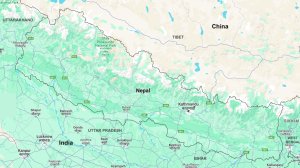Green revolution started in 1961 as intensive agricultural development program. (IADP). Initially 14 districts were selected on experimental basis and later the program was extended to 114 districts in the form of Intensive Agricultural Area Program in 1965.
The purpose of Green Revolution was to make India self-sufficient in the production of food grains. It included use of high yielding variety seeds along with fertilizers, pesticides and implements. It would boost the production multifold. However, this approach is based on the philosophy of capitalism, is capital intensive, and also causes intensive use of land, making it unsustainable.
1. Outcomes of Green Revolution
The green revolution resulted in substantive growth in agricultural output (which is why it is treated as a revolution). It made India self-sufficient in food grain production. Agricultural growth increased at the rate of 3-5% per annum which was an encouraging rate, considering colonial period. The various outcomes of Green Revolution can be summed up as follows:
- Increased Agricultural Production: Adoption of high-yielding variety (HYV) seeds, chemical fertilizers, pesticides, and improved irrigation techniques led to a substantial increase in the production of staple crops, particularly wheat and rice. This helped India achieve food self-sufficiency and reduce dependence on food imports.
- Enhanced Food Security: The boost in agricultural production reduced the incidence of famines and food shortages. This contributed to better food security for the growing population.
- Economic Growth: The agricultural boom also contributed to overall economic growth by increasing rural incomes and boosting the rural economy. Surplus production also allowed for the export of agricultural products.
- Income Inequality: The benefits of the Green Revolution were not evenly distributed, often favoring wealthier farmers who could afford the new technologies. This widened the income gap between rich and poor farmers.
- Regional Disparities: While the Green Revolution significantly improved agricultural productivity in regions like Punjab, Haryana, and western Uttar Pradesh, other areas, particularly rain-fed regions, did not benefit as much. This led to regional disparities in agricultural development.
- Environmental Impact: The intensive use of chemical fertilizers and pesticides led to soil degradation, water table depletion, and pollution. Over time, these environmental issues have raised concerns about the sustainability of Green Revolution practices.
- Employment: Green Revolution largely relying on mechanization of agriculture, reduced the demand for labor in farming.
2. Scholarly Opinion on Green Revolution
However, according to VKRV Rao, an Indian economist, the gain of green revolution came at substantial social and political cost. It has increased the gap between rich and poor. It has increased rural indebtedness because small and marginal farmers had to borrow to purchase implements and seeds. It has reversed the process of land reforms. Small and marginal farmers actually lost the land.
For economist like GS Bhalla & GS Chaddha, green revolution has increased the agricultural wages, total income by multiple times and has strengthened the bargaining power of workers.
On the other hand, economists like Hansra, GS Grewal, suggest that there was no increase in real wages. Increased production was followed by inflation in rates of food grains. Machinization of agriculture displaced labor. It also resulted into migrant labor. It started creating social unrest and destroyed traditional dependence between farmers and laborers.
Rudolph & Rudolph have analyzed the political effect of green revolution as it gave rise to bullock capitalists (rich farmers) and strengthened the role of caste in Indian politics.
Other scholars like TK Oommen, Usha Patnaik, Pranab Bardhan all focus on poor distributive aspect giving rise to frustration and unrest.
Environmentalist Vandana Shiva in her book Violence of Green Revolution, talks about negative impact of it on society as well as nature.
According to former president RK Narayanan, if we neglect the task of land reforms, it will give rise to counter revolution, which has already started in rural areas. Green revolution should not end up giving rise to red revolution.








